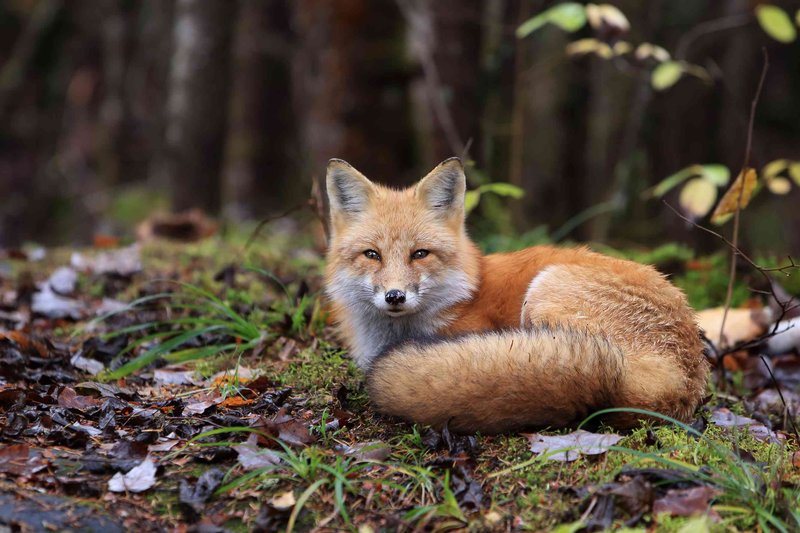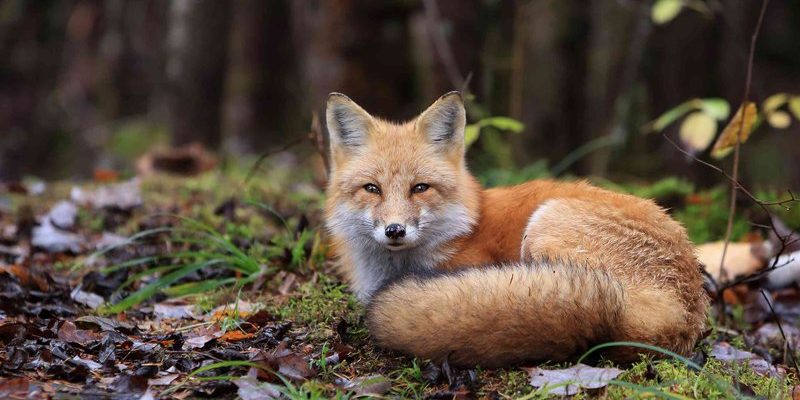
As we explore these myths, you might find it helpful to think of the red fox as a character in a story. They have their own roles within ecosystems, much like how characters drive a narrative forward. From their striking appearance to their behavior, the red fox is as intriguing as the plot twist in your favorite book. So grab a cup of coffee, and let’s uncover the truths about the red fox!
Myth 1: Red Foxes Are Only Found in the Wild
One common misconception is that red foxes are exclusively wild animals, roaming untouched forests and fields. While it’s true that they thrive in natural habitats, red foxes are incredibly adaptable. You might be surprised to learn they often make their homes near human settlements, including towns and cities.
Think of a red fox as the ultimate urban survivor. In fact, they’ve become quite skilled at navigating our landscapes. They can often be spotted rummaging through gardens or scrounging for food scraps in parks. Their adaptability means they can thrive in various environments, from rural areas to more urban settings. So, the next time you think of a red fox, remember that they’re not just forest dwellers; they can be your backyard neighbors too!
Myth 2: All Red Foxes Are Red
You might assume that all red foxes sport a bright red coat, but here’s the twist: their color can vary significantly. While the name “red fox” suggests a uniform coloration, these canids can also be found in shades of gray, black, and even silver.
Their fur color often changes based on the region they inhabit. For instance, arctic foxes—which are different species altogether—can change their coats from brown in summer to white in winter. Even red foxes living in colder climates may show more muted tones to help them blend into their surroundings. This diversity in coloration is more than just stunning; it plays a crucial role in their survival. By adapting their appearance, they increase their chances of evading predators and sneaking up on prey.
Myth 3: Red Foxes Are Dangerous to Humans
You might be wondering if red foxes pose a significant threat to people. After all, some stories paint them as sly and vicious. The truth is, red foxes are generally not dangerous to humans. In fact, they tend to be shy and elusive creatures, avoiding contact with people whenever possible.
Despite their reputation for cunning, red foxes are more interested in hunting small rodents, birds, and insects rather than causing harm to humans. Their natural instincts kick in when they’re frightened, prompting them to flee rather than fight. So, while you might catch a glimpse of one darting away in the wild, it’s probably just as eager to escape as you would be to avoid an unwelcome encounter!
Myth 4: Red Foxes Are Solitary Creatures
It’s a common belief that red foxes are solitary animals, but this isn’t entirely accurate. While they do enjoy spending time alone and hunting independently, they also form strong family bonds. During the breeding season, a male and female will come together to raise their kits.
These fox families can be quite close-knit. The parents work together to provide for their young, teaching them essential survival skills before they venture off on their own. You might even see siblings playing together, which is a crucial part of their social development. So, while they’re often spotted alone, remember that they have meaningful relationships with their families!
Myth 5: Red Foxes Only Hunt at Night
Many assume that red foxes are purely nocturnal predators, out prowling only after dark. While they are crepuscular, meaning they are most active during dawn and dusk, they can also hunt during the day. Their flexible hunting patterns allow them to adapt to different environments and food availability.
If you think about it, being active during those early and late hours makes sense for avoiding larger predators and catching their prey off guard. But if you visit a local park in the afternoon, don’t be surprised if you spot one sunbathing or sniffing around for some lunch. Their varied activity patterns showcase their intelligence and adaptability.
Myth 6: Red Foxes Are Only Found in Cold Climates
Another myth suggests that red foxes prefer colder climates, but they can thrive in a wide range of environments. While they are often associated with northern regions, they also flourish in warm areas, such as deserts and grasslands.
Their adaptability is a remarkable feature of red foxes. For example, you can find them in parts of North America, Europe, Asia, and even North Africa. Those living in milder climates often have a thicker coat adapted to heat, while those in colder regions develop thicker fur to stay warm in winter. This ability to change with their surroundings means they are a staple of many ecosystems around the globe.
Myth 7: Red Foxes Are Just Pests
Finally, a prevailing misconception is that red foxes are nothing more than nuisances. Sure, they can occasionally raid gardens or chicken coops, but labeling them as pests overlooks their essential role in the ecosystem.
Red foxes are skilled hunters and help control populations of small animals. By keeping rodents and other pests in check, they play a vital role in maintaining a balanced environment. So, the next time you hear someone call them a pest, remind them of the benefits these clever creatures bring to our ecosystems. They’re more than just furry bandits; they’re key players in nature’s story!
In conclusion, the fascinating world of red foxes is filled with misunderstandings and misconceptions. From their habitat preferences to their social structures, it’s essential to see them for the complex creatures they are. By debunking these myths, we can foster a greater appreciation for red foxes and their roles in our ecosystems. Next time you spot one, remember, there’s more to their story than meets the eye!

